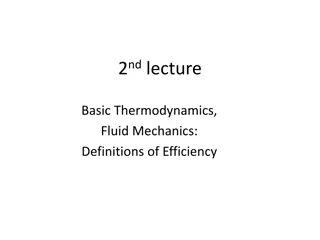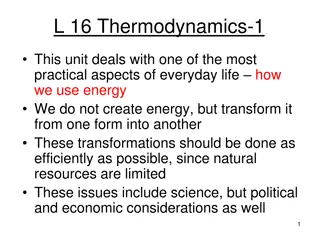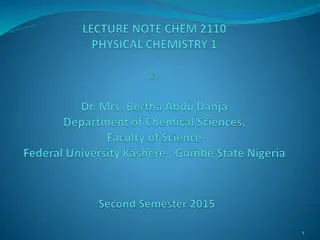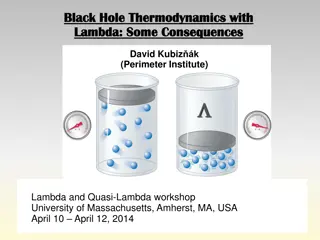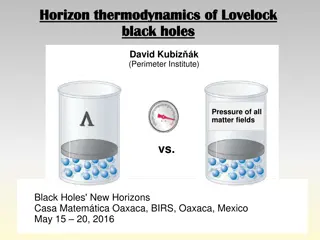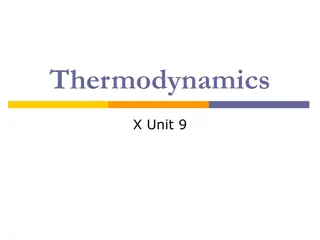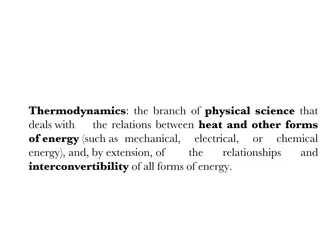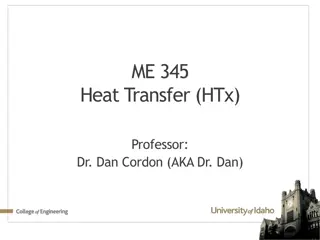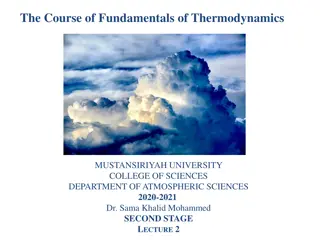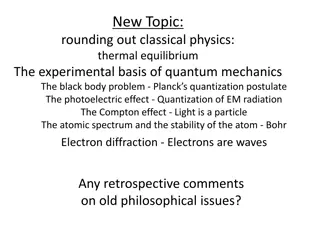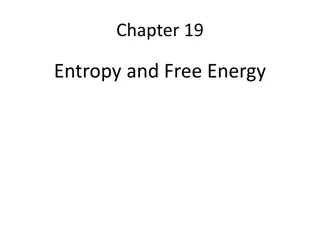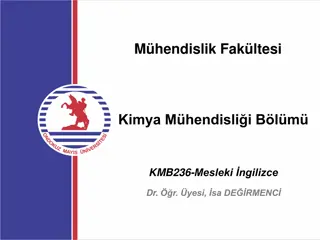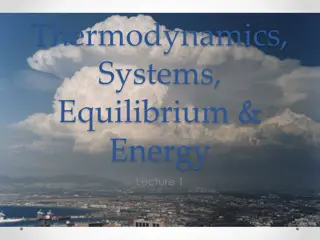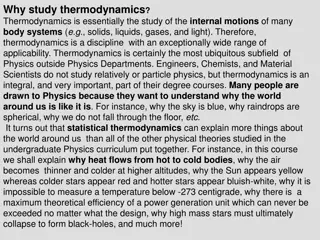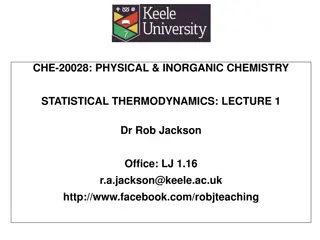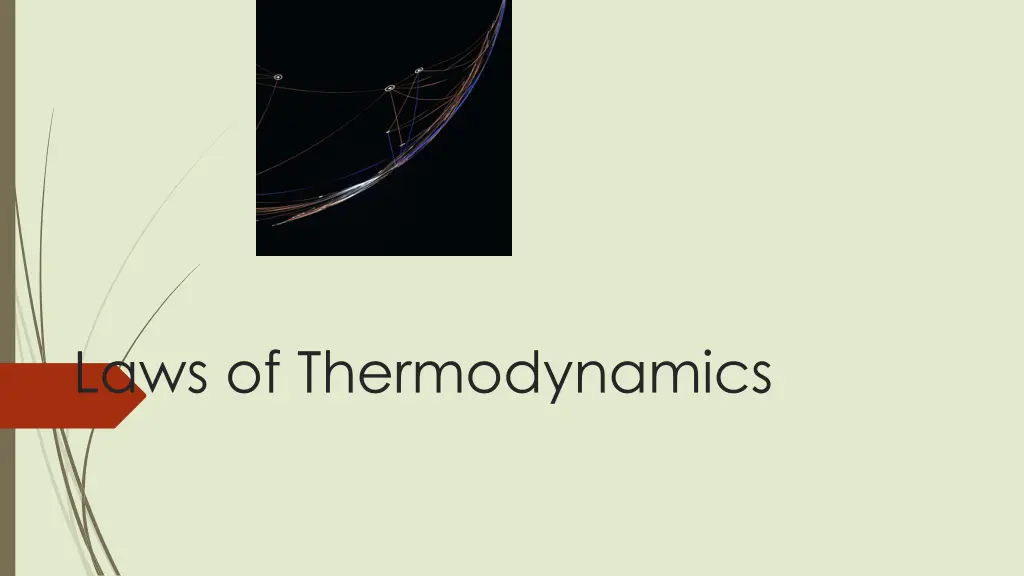
Understanding Thermodynamics: Laws and Concepts
Explore the fundamental laws of thermodynamics including the Zeroth Law, First Law, Second Law, and Third Law. Learn about the principles governing energy transfer, heat, work, temperature, and entropy within thermal systems. Delve into the branches of physics that study these phenomena and uncover the essential relationships that define the behavior of dynamic systems.
Download Presentation

Please find below an Image/Link to download the presentation.
The content on the website is provided AS IS for your information and personal use only. It may not be sold, licensed, or shared on other websites without obtaining consent from the author. If you encounter any issues during the download, it is possible that the publisher has removed the file from their server.
You are allowed to download the files provided on this website for personal or commercial use, subject to the condition that they are used lawfully. All files are the property of their respective owners.
The content on the website is provided AS IS for your information and personal use only. It may not be sold, licensed, or shared on other websites without obtaining consent from the author.
E N D
Presentation Transcript
Contents: Zeroth law of thermodynamics First law of thermodynamics Second law of thermodynamics Third law of thermodynamics
Thermodynamics: Branch of physics, dealing with the study of thermal systems without taking into account their internal structure Science of the relationship between heat, work, temperature, and energy. In broad terms, thermodynamics deals with the transfer of energy from one place to another and from one form to another. The key concept is that heat is a form of energy corresponding to a definite amount of mechanical work.
Zeroth law of thermodynamics: When two systems are each in thermal equilibrium with a third system, the first two systems are in thermal equilibrium with each other.
First law of thermodynamics: law of conservation of energy. The change in a system s internal energy is equal to the difference between heat added to the system from its surroundings and work done by the system on its surroundings.
Second law of thermodynamics: Kelvin-Plank statement: It is not possible for a heat engine operating in a cycle to convert its heat input completely into work Clausius Statement: It is impossible for a self acting machine ( anaided by any external agency) to transfer heat from one body at lower temperature to another body at higher temperature In other words heat at a given temperature cannot be converted entirely into work. Consequently, the entropy of a closed system, or heat energy per unit temperature, increases over time toward some maximum value. Thus, all closed systems tend toward an equilibrium state in which entropy is at a maximum and no energy is available to do useful work.
Third Law of Thermodynamics: The entropy of a perfect crystal of an element in its most stable form tends to zero as the temperature approaches absolute zero.

